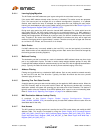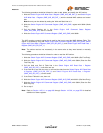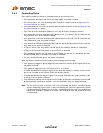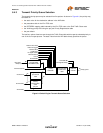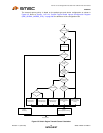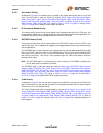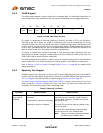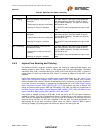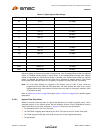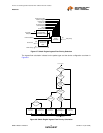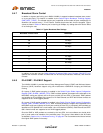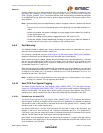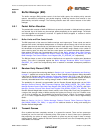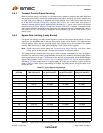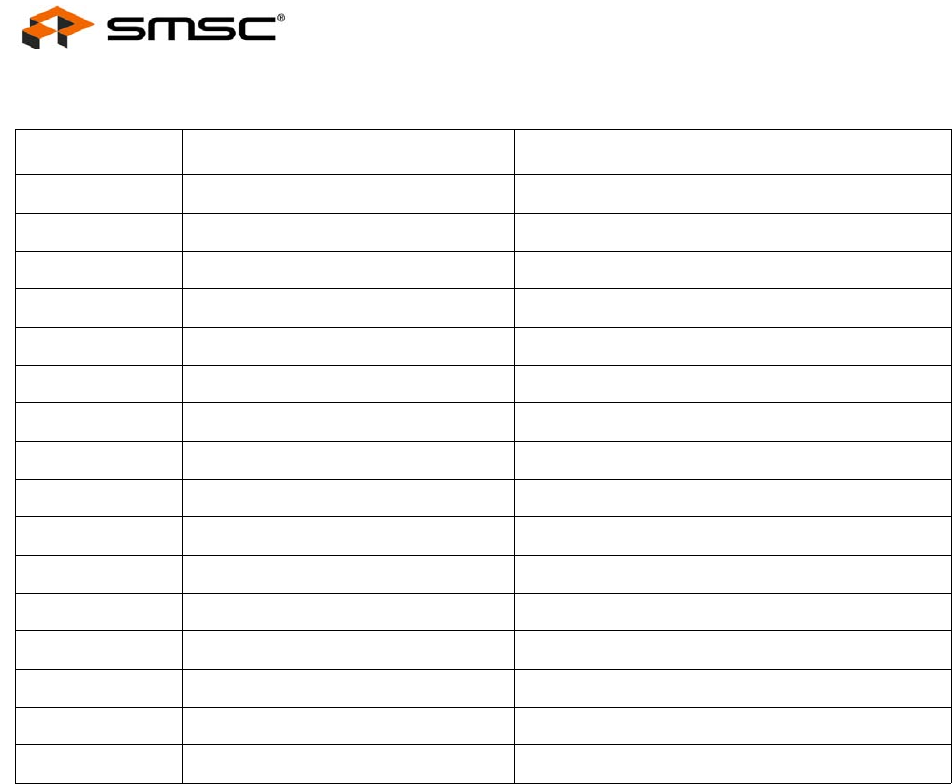
Two Port 10/100 Managed Ethernet Switch with 16-Bit Non-PCI CPU Interface
Datasheet
Revision 1.4 (08-19-08) 72 SMSC LAN9311/LAN9311i
DATASHEET
After each packet is received, the bucket is decremented. If the Committed Burst bucket has sufficient
tokens, it is debited and the packet is colored Green. If the Committed Burst bucket lacks sufficient
tokens for the packet, the Excess Burst bucket is checked. If the Excess Burst bucket has sufficient
tokens, it is debited, the packet is colored Yellow and is subjected to random discard. If the Excess
Burst bucket lacks sufficient tokens for the packet, the packet is colored Red and is discarded.
Note: All of the token buckets are initialized to the default value of 1536. If lower values are
programmed into the CBS and EBS parameters, the token buckets will need to be normally
depleted below these values before the values have any affect on limiting the maximum value
of the token buckets.
Refer to Section 14.5.3.25, on page 395 through Section 14.5.3.29, on page 400 for detailed register
descriptions.
6.4.6.1 Ingress Flow Calculation
Based on the flow monitoring mode, an ingress flow definition can include the ingress priority. This is
calculated similarly to the transmit queue with the exception that the Priority Regeneration and the
Traffic Class table are not used. As shown in Figure 6.7, the priority can be based on:
The precedence bits in the IPv4 TOS octet
The DIFFSERV mapping table indexed by the IPv4 TOS octet or the IPv6 Traffic Class octet
The VLAN tag priority field (but not through the per port Priority Regeneration table)
The port default
Table 6.3 Typical Ingress Rate Settings
CIR Setting Time Per Byte Bandwidth
0-3 80 nS 100 Mbps
4 100 nS 80 Mbps
5 120 nS 67 Mbps
6 140 nS 57 Mbps
7 160 nS 50 Mbps
9 200 nS 40 Mbps
12 260 nS 31 Mbps
19 400 nS 20 Mbps
39 800 nS 10 Mbps
79 1600 nS 5 Mbps
160 3220 nS 2.5 Mbps
402 8060 nS 1 Mbps
804 16100 nS 500 Kbps
1610 32220 nS 250 Kbps
4028 80580 nS 100 Kbps
8056 161140 nS 50 Kbps



